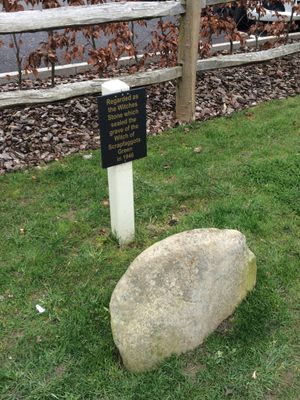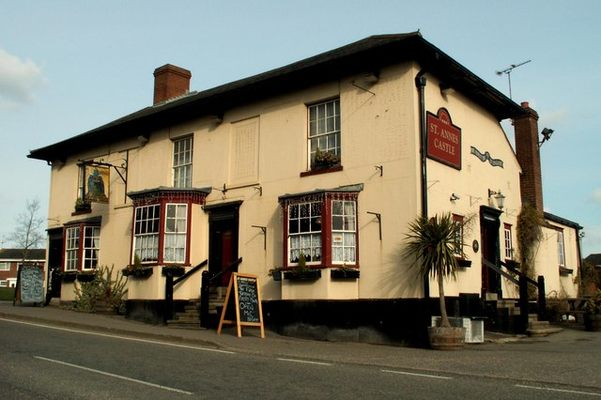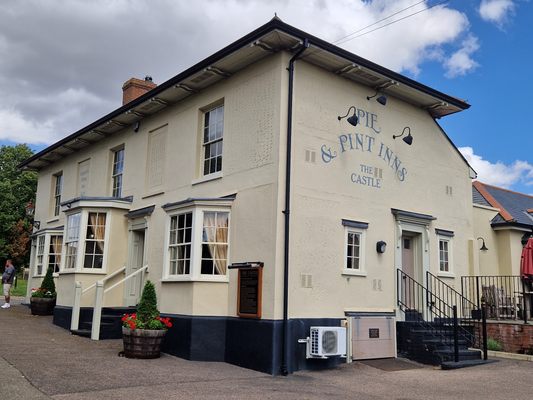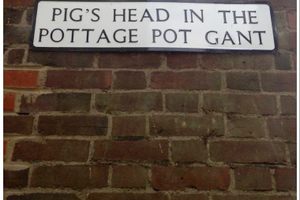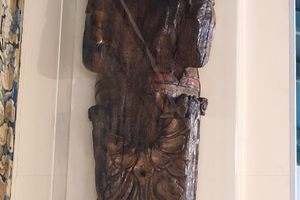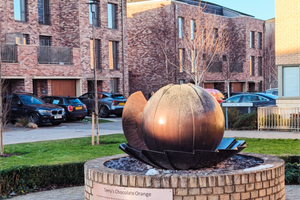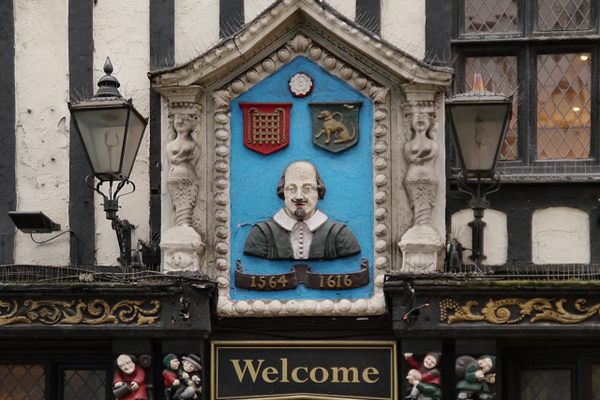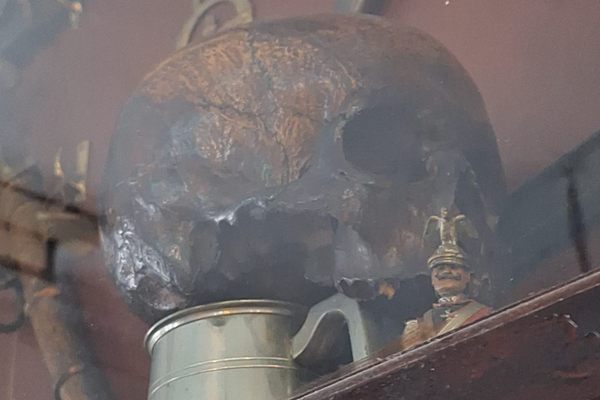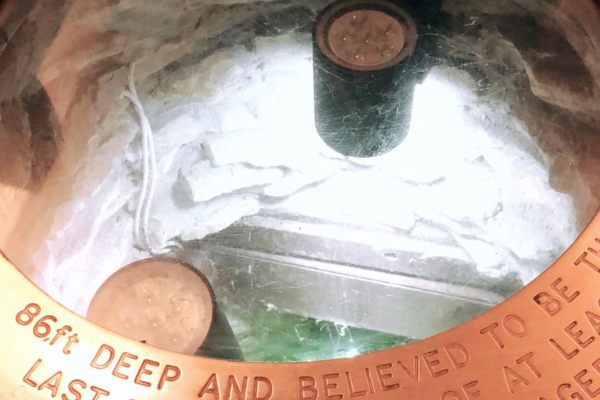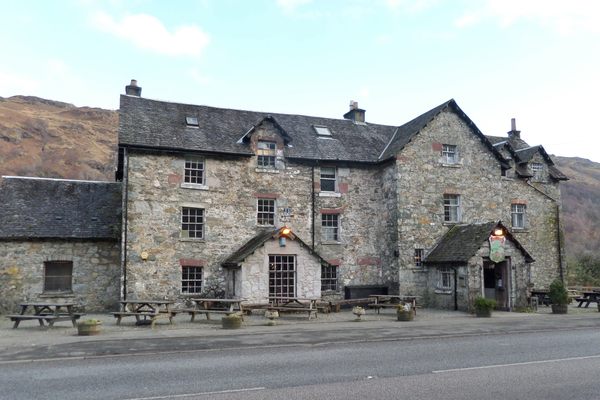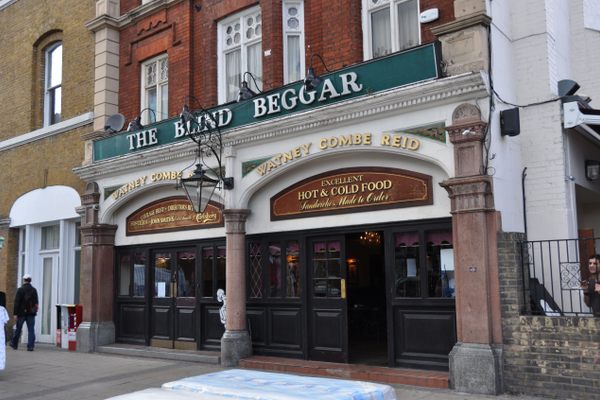About
St Anne’s Castle, in Great Leighs, Essex, is supposedly the oldest licensed inn in the country. Though, due to a devastating fire, the current building is less than 100 years old, an inn on the site is recorded in The Domesday Book in 1086 (and others hold claim to the same title). As one might expect for a site with so much history, it is home to many mysteries and alleged hauntings. However, it is outside the walls, just a stone’s throw away, in fact, that one finds the mystery of Anne herself.
Anne Hughes lived close to Great Leighs in the 17th century and was very likely familiar with the already ancient inn that sat on the crossroads. In 1621, she was found guilty by a Chelmsford court of practicing witchcraft.
Most individuals charged with witchcraft were hanged, but Hughes was also accused of murdering her husband, which was punishable by burning at the stake. Denied a Christian burial, her remains were buried on the spot of her execution, the crossroads shared with the inn. Both the inn and the burial site adopted names related to these events. The inn became St Annes Castle (and now known just as The Castle), and the location of her burial became known as Scrapfaggots Green, "scrapfaggot" being a corruption of the East Anglian term "scratch-faggot," meaning a witch.
Crossroads were commonly used to bury those denied a Christian burial at the time, such as executed criminals. There is debate over why this was the case. Some argue that, as crossroads belonged to nobody, no burial costs would need to be paid. Others posit that crossroads were chosen to confuse any returning spirits. As was customary in the burial of those believed to be witches, a large stone was placed over the site to trap the spirit and mark the grave. The stone remained in place through the centuries, until World War II.
In 1944, American forces arrived to aid the war effort. With them came large vehicles and equipment. Unfamiliar with the local legend, the commanding officers decided to widen the roads. However, to the distress of superstitious locals, this involved moving the stone from Hughes’s grave.
Local legend took hold after human bones were found beneath the stone, and seemingly cursed events began to take place. Great Leighs, an area dependent on agriculture and farming, was heavily affected when their chickens stopped laying eggs and cows no longer produced milk. Livestock began escaping without any clear means of doing so. The spirit, believed to be that of Hughes, even affected the church, with bells ringing at random intervals.
Able to endure no more, the villagers insisted the stone be replaced over the grave. It was found broken, so a large fragment was chosen as a compromise and reinstalled. The unwelcome events promptly stopped, the legend goes, and the stone remains in place to this day. Though the inn is still said to be haunted by her ghost, the rest of the village has had peace since.
Some feel the whole saga is but another example of the type of mass hysteria that likely led to witch hunts in the first place. This superstitious prejudice is a particularly dark stain on the area's history, as more trials and executions for witchcraft took place in Essex than in any other county in the United Kingdom. So numerous were the victims of 16th- and 17th-century witch hunts in the county that a memorial was erected.
Related Tags
Know Before You Go
The stone occupies a somewhat forlorn spot on the right of the entrance to the pub car park, under a small advertising board. The sign that once explained the stone is broken off and hiding under a hedge.
Community Contributors
Added By
Published
June 26, 2020
Sources
- Wreyford, P., 2013. The A-Z Of Curious Essex: Strange Stories Of Mysteries, Crimes And Eccentrics. The History Press.
- Hopkinson, F., 2013. The Joy Of Pubs: Everything You Wanted To Know About Britain's Favourite Drinking Establishment. London: Pavilion Books.
- http://www.icysedgwick.com/3-weird-things-at-crossroads/
- Day, J. (2012). Haunted Chelmsford. Stroud: The History Press.
- http://www.mysteriousbritain.co.uk/hauntings/st-annes-castle-great-leighs/

